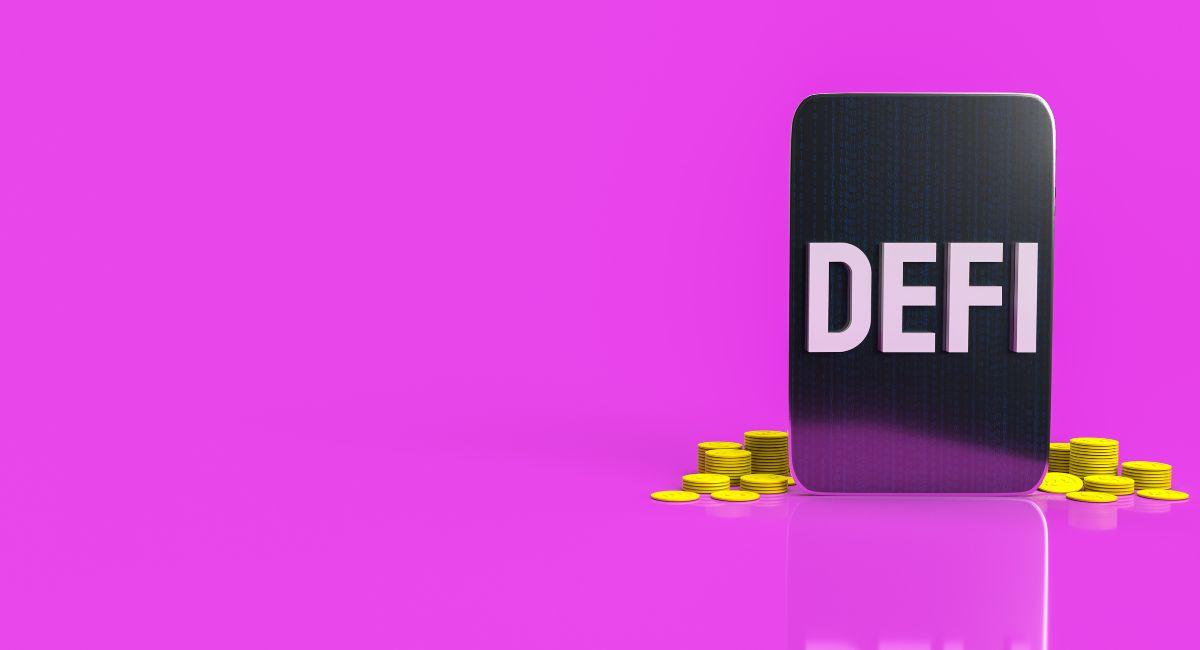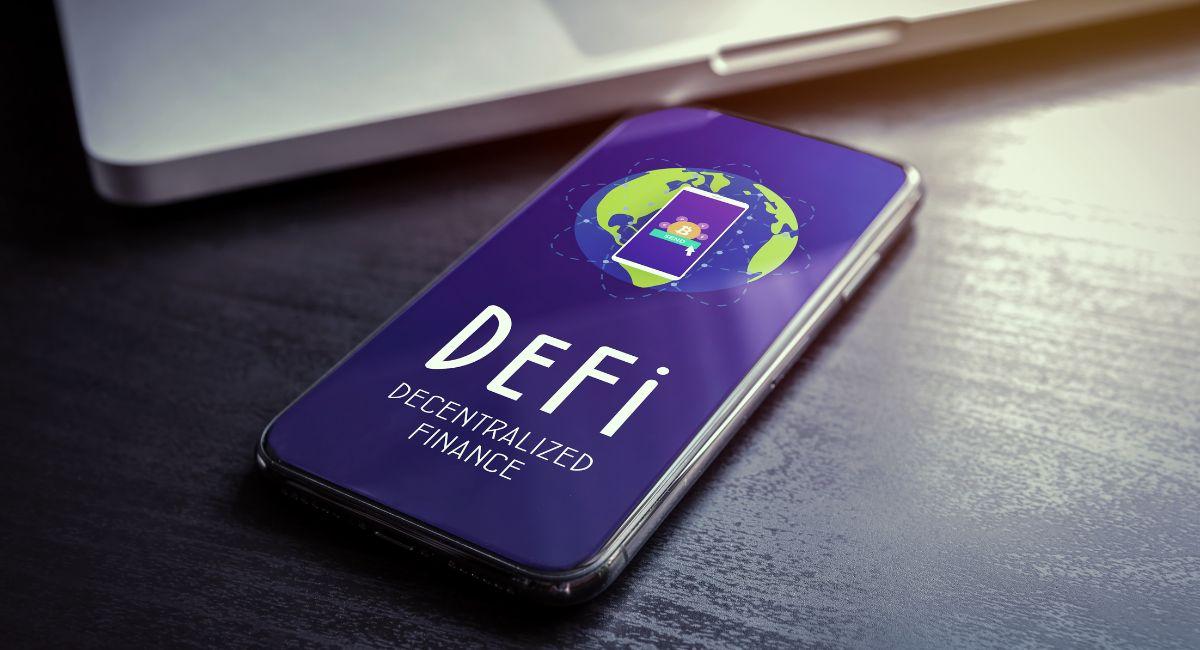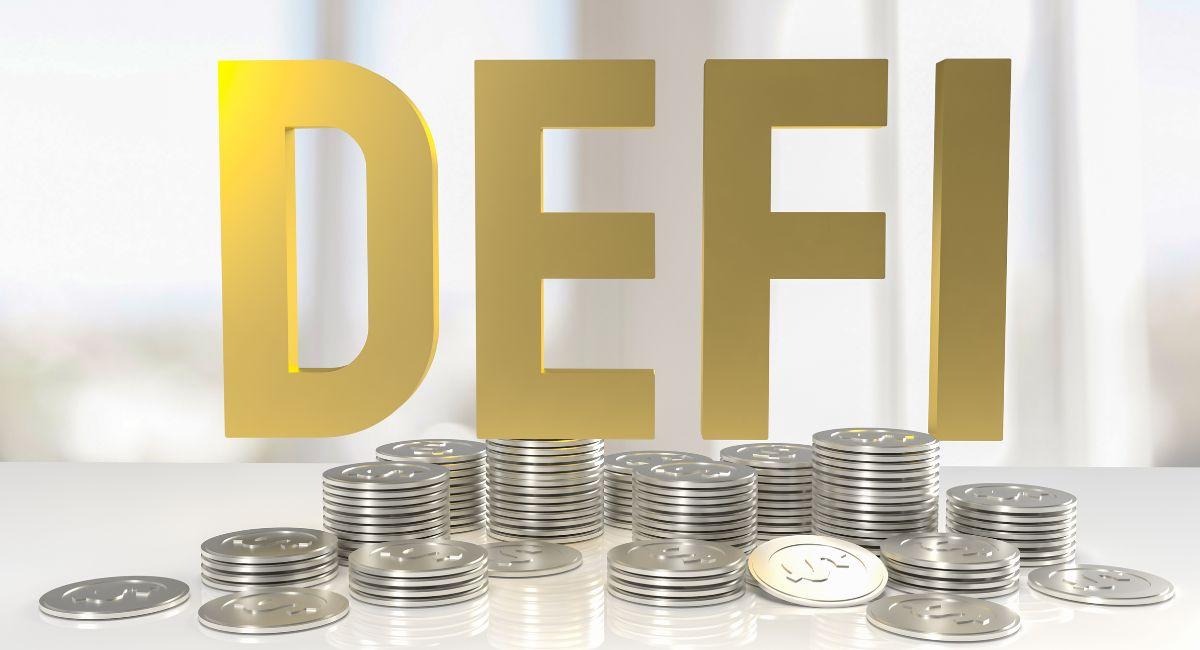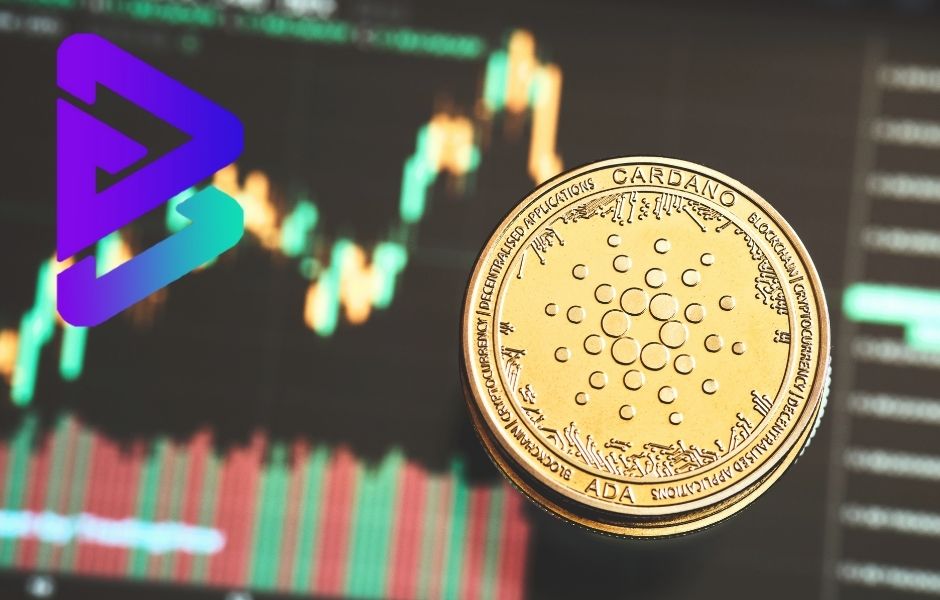Top 10 Intriguing Things DeFi Interoperability Will Change When It Will Go Mainstream
DeFi interoperability refers to the ability of different decentralized finance (DeFi) applications and protocols built on separate blockchains to communicate and interact with each other. Currently, many blockchains operate as isolated ecosystems, hindering the overall growth and usability of DeFi.
Imagine a world map where each continent represents a separate blockchain. DeFi applications (dApps) on one continent cannot interact with those on another. This fragmentation creates limitations:
- Restricted User Experience: Users can only access DeFi services built on the specific blockchain they’re using.
- Limited Liquidity: Liquidity, the ease of buying and selling assets, is confined to each blockchain’s ecosystem.
- Hindered Innovation: Developers are restricted to the functionalities of a single blockchain.
DeFi interoperability aims to bridge these gaps by enabling:
- Cross-chain asset transfer: Users can move their cryptocurrencies and other digital assets between different blockchains for use in various DeFi applications.
- Interoperable dApps: DeFi applications can leverage the strengths of different blockchains for specific functions. Imagine borrowing on a secure chain and using those funds for trading on a faster, cheaper chain.
- Unified DeFi ecosystem: All DeFi applications, regardless of their underlying blockchain, become part of a more interconnected financial network.
Here’s an analogy: Think of DeFi interoperability as building bridges between previously isolated islands. These bridges allow for:
- Greater Accessibility: Users can explore a wider range of DeFi services and products from a single platform.
- Deeper Liquidity Pools: Liquidity is aggregated across different blockchains, leading to tighter spreads and better rates for users.
- Unleashing Innovation: Developers can combine the strengths of various blockchains to create more powerful and creative DeFi tools.
Overall, DeFi interoperability paves the way for a more efficient, user-friendly, and innovative decentralized financial landscape. It’s a crucial step towards a future where DeFi fulfills its promise of a more open and inclusive financial system.
A little bit about DeFi
Decentralized Finance (DeFi) refers to a revolutionary financial ecosystem built on blockchain technology, aiming to decentralize and democratize traditional financial services. In the DeFi framework, intermediaries like banks are replaced by smart contracts running on decentralized networks, primarily on the Ethereum blockchain.
DeFi encompasses a wide range of financial applications, including lending, borrowing, trading, and asset management, all executed in a trustless and automated manner. Smart contracts, self-executing pieces of code, facilitate these financial transactions without the need for traditional intermediaries. Users engage with platforms using digital assets as collateral, enabling global access to financial services without reliance on a centralized authority. It has witnessed rapid growth, offering users greater financial inclusivity, transparency, and control over their assets. However, challenges such as security vulnerabilities, regulatory uncertainties, and smart contract risks underscore the need for ongoing development and refinement within the space. As continues to evolve, its potential to reshape the traditional financial landscape by providing more accessible and efficient financial services becomes increasingly evident.
Also, read- Exploring Alternatives To Blockchain For Decentralized Finance (DeFi)
DeFi Interoperability Platforms: Building Bridges in the Blockchain Oasis

Decentralized Finance (DeFi) has emerged as a revolutionary force, promising a future free from centralized control. However, the current landscape resembles a scattered archipelago of blockchains, each with its own DeFi ecosystem. This fragmentation hinders user experience, limits liquidity, and stifles innovation. Here’s where DeFi interoperability platforms come in, acting as vital bridges that connect these isolated islands, fostering a truly interconnected financial future.
Examples of Interoperability Platforms:
-
Cosmos (ATOM): Built with scalability and interoperability at its core, Cosmos utilizes a “hub-and-spoke” model. The Cosmos Hub acts as a central hub, facilitating communication between independent blockchains called “zones.” Each zone can have its own tokenomics and governance, but can still interact seamlessly with others in the Cosmos ecosystem. Think of it as a bustling marketplace where various DeFi applications, built on specialized zones, can trade and interact.
-
Polkadot (DOT): Similar to Cosmos, Polkadot employs a “parachain” architecture. Parachains are independent blockchains that connect to the central relay chain, Polkadot, for security and interoperability. This allows developers to build specialized DeFi applications on parachains, leveraging Polkadot’s robust security infrastructure. Imagine Polkadot as a federation of sovereign states, each with its own DeFi economy, but all united under the banner of secure and efficient cross-chain communication.
-
Wanchain (WAN): This platform takes a different approach, utilizing “atomic swaps” to facilitate trustless asset transfers between different blockchains. Think of atomic swaps as secure, self-executing vending machines. You put in one cryptocurrency from one chain and receive the equivalent value in another cryptocurrency on a different chain, all without relying on a central authority.
-
THORChain (RUNE): This innovative platform utilizes a network of liquidity pools to enable decentralized asset swaps across various blockchains. Imagine a network of interconnected forex booths, each managed by the community, allowing users to exchange cryptocurrencies seamlessly, regardless of their native blockchain.
Benefits of Interoperability Platforms:
-
Enhanced User Experience: With interoperability, users can access a wider range of DeFi services and products from a single platform. No more juggling multiple wallets and navigating different interfaces. It’s like having a universal passport for the DeFi world.
-
Increased Liquidity: Interoperability allows for the aggregation of liquidity from various blockchains. This creates deeper markets with tighter spreads, benefiting both borrowers and lenders in DeFi protocols. Imagine a global pool of capital readily available for DeFi activity, fostering a more vibrant financial ecosystem.
-
Unlocking Innovation: Developers are no longer confined to a single blockchain’s limitations. They can leverage the strengths of different platforms to create more powerful and innovative DeFi applications. Think of interoperability as a playground for developers, where they can combine the best features of various blockchains to build groundbreaking financial tools.
-
A More Efficient DeFi Landscape: Interoperability paves the way for efficient use of resources. Users don’t need to hold multiple cryptocurrencies specific to each blockchain they interact with. This streamlines DeFi participation and reduces unnecessary complexities.
Challenges and Considerations:
-
Security: Interoperability introduces new security vulnerabilities. Robust mechanisms are crucial to ensure the safekeeping of user funds during cross-chain transactions. Developers and users must carefully evaluate the security protocols employed by interoperability platforms.
-
Standardization: Different blockchains have varying communication protocols. Establishing standardized protocols is essential for seamless interoperability. Projects like Cosmos IBC and Polkadot parachains are actively working towards this goal.
-
Regulation: Regulatory bodies are still grappling with DeFi. Interoperability adds another layer of complexity, potentially blurring jurisdictional lines. Clear and adaptable regulations are needed to allow DeFi to flourish in a globalized, interconnected environment.
The Future of DeFi Interoperability:
DeFi interoperability platforms are the missing link in creating a truly unified DeFi ecosystem. As these platforms evolve, we can expect to see:
-
Emergence of Multi-Chain Strategies: Users will leverage the strengths of different blockchains for specific DeFi needs. Imagine securely storing assets on a secure chain while using them for lending or trading on a faster, cheaper chain.
-
A More Open Financial System: Interoperability fosters a financial system where users have greater control over their assets and access to a wider range of financial products and services, regardless of their location or background.
-
A Flourishing DeFi Marketplace: With interoperability, competition between DeFi applications across different blockchains will intensify, ultimately benefiting users with better rates, innovative products, and a more user-friendly experience.
DeFi interoperability platforms are more than just technological advancements; they represent a philosophical shift towards a more open, inclusive, and efficient financial future. By building bridges across blockchain silos, they are paving the way for
What will when DeFi interoperability becomes mainstream?

When DeFi interoperability becomes mainstream, it will usher in a new era of seamless collaboration and functionality across diverse decentralized financial platforms. Here are the top 10 things that will change:
- Enhanced Liquidity Across Platforms:
- Interoperability will facilitate seamless asset transfers and liquidity provision across different protocols, reducing fragmentation and enhancing overall liquidity in the decentralized ecosystem.
- Cross-Platform Asset Swapping:
- Users will be able to swap assets directly between different platforms without the need for intermediaries, fostering a more fluid and efficient decentralized exchange experience.
- Integrated Financial Products:
- DeFi protocols will be able to integrate and leverage the features of other protocols, leading to the creation of more comprehensive and sophisticated financial products that combine functionalities from multiple platforms.
- Collaborative Yield Farming:
- Yield farming and liquidity mining strategies can be executed across various platforms simultaneously, allowing users to optimize their returns by capitalizing on the best opportunities available.
- Cross-Platform Staking:
- Interoperability will enable users to stake their assets on one platform while simultaneously participating in governance or earning rewards on another, promoting a more flexible and diversified staking experience.
- Single Identity and Wallet Integration:
- Users will be able to manage their activities seamlessly through a single identity and wallet integration that spans multiple interoperable platforms, streamlining the user experience.
- Risk Diversification:
- Interoperability will enable users to diversify their risk by spreading their assets and activities across different protocols, mitigating the impact of potential vulnerabilities on any single platform.
- Efficient Arbitrage Opportunities:
- Traders will have the ability to capitalize on arbitrage opportunities across various DeFi platforms in real-time, taking advantage of price differentials and optimizing their trading strategies.
- Global Access to Financial Products:
- Interoperability will break down geographical barriers, allowing users worldwide to access a broader range of financial products and services, contributing to increased financial inclusion.
- Cross-Platform Governance Participation:
- Users will be able to participate in governance activities across multiple protocols simultaneously, enhancing their influence and decision-making power within the broader DeFi ecosystem.
Conclusion
DeFi interoperability, when it reaches mainstream adoption, has the potential to be a watershed moment for finance. It won’t be just a technical feat, but a transformation of the financial landscape. Imagine a world where:
-
Financial borders dissolve: Users can seamlessly access the best DeFi products and services regardless of the underlying blockchain. It’s like having a universal financial passport, breaking down geographical barriers and fostering a truly global financial marketplace.
-
Innovation explodes: Developers are unleashed to create a new generation of DeFi applications that leverage the strengths of multiple blockchains. Think of it as a symphony, where different blockchains play their unique roles to create a powerful and harmonious financial ecosystem.
-
Power shifts to the user: With greater access to DeFi tools and competition between applications, users will have more control over their finances and benefit from better rates and a wider range of products. The user becomes the conductor, choosing the DeFi instruments that best suit their needs.
The mainstream adoption of DeFi interoperability promises a future where finance is more efficient, inclusive, and user-centric. It’s a future where DeFi lives up to its core ideals, empowering individuals and fostering a more democratic financial system. This interconnected future holds immense potential, and DeFi interoperability platforms are building the bridges that will take us there.
Stay informed with daily updates from Blockchain Magazine on Google News. Click here to follow us and mark as favorite: [Blockchain Magazine on Google News].
Get Blockchain Insights In Inbox
Stay ahead of the curve with expert analysis and market updates.
latest from tech
Disclaimer: Any post shared by a third-party agency are sponsored and Blockchain Magazine has no views on any such posts. The views and opinions expressed in this post are those of the clients and do not necessarily reflect the official policy or position of Blockchain Magazine. The information provided in this post is for informational purposes only and should not be considered as financial, investment, or professional advice. Blockchain Magazine does not endorse or promote any specific products, services, or companies mentioned in this posts. Readers are encouraged to conduct their own research and consult with a qualified professional before making any financial decisions.

 Bitcoin
Bitcoin  Ethereum
Ethereum  Tether
Tether  XRP
XRP  Solana
Solana  Dogecoin
Dogecoin  USDC
USDC  Lido Staked Ether
Lido Staked Ether  Cardano
Cardano  TRON
TRON  Avalanche
Avalanche  Chainlink
Chainlink  Wrapped stETH
Wrapped stETH  Toncoin
Toncoin  Sui
Sui  Shiba Inu
Shiba Inu  Wrapped Bitcoin
Wrapped Bitcoin  Hyperliquid
Hyperliquid  Stellar
Stellar  Polkadot
Polkadot  Hedera
Hedera  WETH
WETH  Bitcoin Cash
Bitcoin Cash  LEO Token
LEO Token  Uniswap
Uniswap  Litecoin
Litecoin  Pepe
Pepe  Wrapped eETH
Wrapped eETH  NEAR Protocol
NEAR Protocol  Ethena USDe
Ethena USDe  Aptos
Aptos  USDS
USDS  Internet Computer
Internet Computer  Aave
Aave  Cronos
Cronos  POL (ex-MATIC)
POL (ex-MATIC)  Mantle
Mantle  Ethereum Classic
Ethereum Classic  Render
Render  MANTRA
MANTRA  Monero
Monero  WhiteBIT Coin
WhiteBIT Coin  Bittensor
Bittensor  Dai
Dai  Artificial Superintelligence Alliance
Artificial Superintelligence Alliance  Arbitrum
Arbitrum  Ethena
Ethena 





